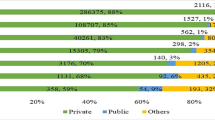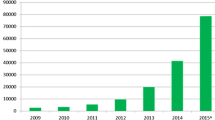Abstract
There are two ways in which new road schemes may influence capital expenditure on vehicles. Firstly, by improving utilisation of existing vehicles, the size of fleet needed to perform a given volume of work may be reduced. This will clearly reduce the amount of capital tied up in motor vehicles at any point in time, and to the extent that vehicle life is determined by age rather than mileage run, will also yield savings in terms of investment in new vehicles. Secondly, by generating additional road traffic, road schemes may lead to an increase in the stock of vehicles in use.
This paper argues that the current treatment of vehicle depreciation and interest charges in U.K. cost data fails to allow correctly for either of these items. Errors of logic occur in the way in which the capital stock of vehicles is valued, and in the fact that certain overheads are ignored even when fleet size changes. Moreover, the empirical evidence supporting the current partitioning of depreciation into overhead and running cost components, and the assumption of constant hours in service after an increase in journey speed seems of doubtful validity.
An alternative method of calculating vehicle capital costs, based on the concept of annual capital charge, and making explicit the assumptions with respect to vehicle utilisation, is advocated, and the sensitivity of results to the view taken of the latter is demonstrated by means of specimen calculations.
Similar content being viewed by others
References
Australian Road Research Board (1973). Road User Cost Manual, Special Report No. 9, Melbourne.
Barrel, D. W. F. and Hills, P. J. (1972). “The Application of Cost-Benefit Analysis to Transport Investment Projects in Britain.” Transportation 1: 1, May.
Coburn, T. M., Beesley, M. E. and Reynolds, D. J. (1960). The London — Birmingham Motorway, Road Research Laboratory Technical Paper No. 46, London: HMSO.
Dawson, R. F. F. (1968). The Economic Assessment of Road Improvement Schemes, Road Research Laboratory Technical Paper No. 75, London: HMSO.
Dawson, R. F. F. (1972). Vehicle Operating Costs in 1970. Transport and Road Research Laboratory Report LR 439, Crowthorne: Department of the Environment.
Edwards, S. L. and Bayliss, B. T. (1972). Operating Costs in Road Freight Transport, London: Department of the Environment.
Expenditure Committee of the House of Commons. (1973). Second Report, on Urban Transport Planning. London: HMSO.
Freeman, Fox, Wilbur Smith & Associates (1969). London Transportation Study, Phase III.
Harrison, A. J. (1963). “Road Transport and the Motorways,” Bulletin Oxford Univ. Inst. Statist., 25, 215–237.
Harrison, A. J. and Quarmby, D. A. (1973). “The Value of Time,” in R. Layard, Ed., Cost-Benefit Analysis, Harmondsworth: Penguin.
London Motorway Action Group (1971). Transport Strategy in London.
Merrett, A. J. and Sykes, Allen (1963). The Finance and Analysis of Capital Projects, London: Longmans.
Ministry of Transport (1970). Vehicle Operating Costs and the Lex Garages Data. Mathematical Advisory Unit Note 185.
Nash, C. A. (1974). Replacement Policies in the Road Transport Industry, Leeds University: Unpublished Ph. D. Thesis.
Neuburger, H. (1971). “Perceived Costs,” Environment and Planning, 3, 369–376.
Plowden, S. P. C. (1972). Towns Against Traffic, London: Andre Deutsch.
Quarmby, D. A. (1967). “Choice of Travel Mode on the Journey to Work,” J. Transp. Econ. Policy., 1, 273–314.
Tipping, D. G. (1968). “Time Savings in Transport Studies,” Econ. J. 78, 543–54.
Webb, Michael (1972). Transporting Goods by Road, London: Weidenfeld and Nicolson.
Webb, M. G. (1967). “Some Principles Involved in the Economic Comparison of Power Station,” Manchr. Sch. Econ. Pol. Sci. 35, 1–18.
Wilson, A. G., Hawkins, A. F., Hill, G. J., and Wagon, D. J. (1969). “Calibration and Testing of the SELNEC Transport Model,” Reg. Studies, 3, 337–350.
Wykoff, F. C. (1970). “Capital Depreciation in the Post-War Period: Automobiles,” Rev. Econ. Stats., 52, 168–172.
Author information
Authors and Affiliations
Rights and permissions
About this article
Cite this article
Nash, C. The treatment of capital costs of vehicles in evaluating road schemes. Transportation 3, 225–242 (1974). https://doi.org/10.1007/BF00165488
Issue Date:
DOI: https://doi.org/10.1007/BF00165488




